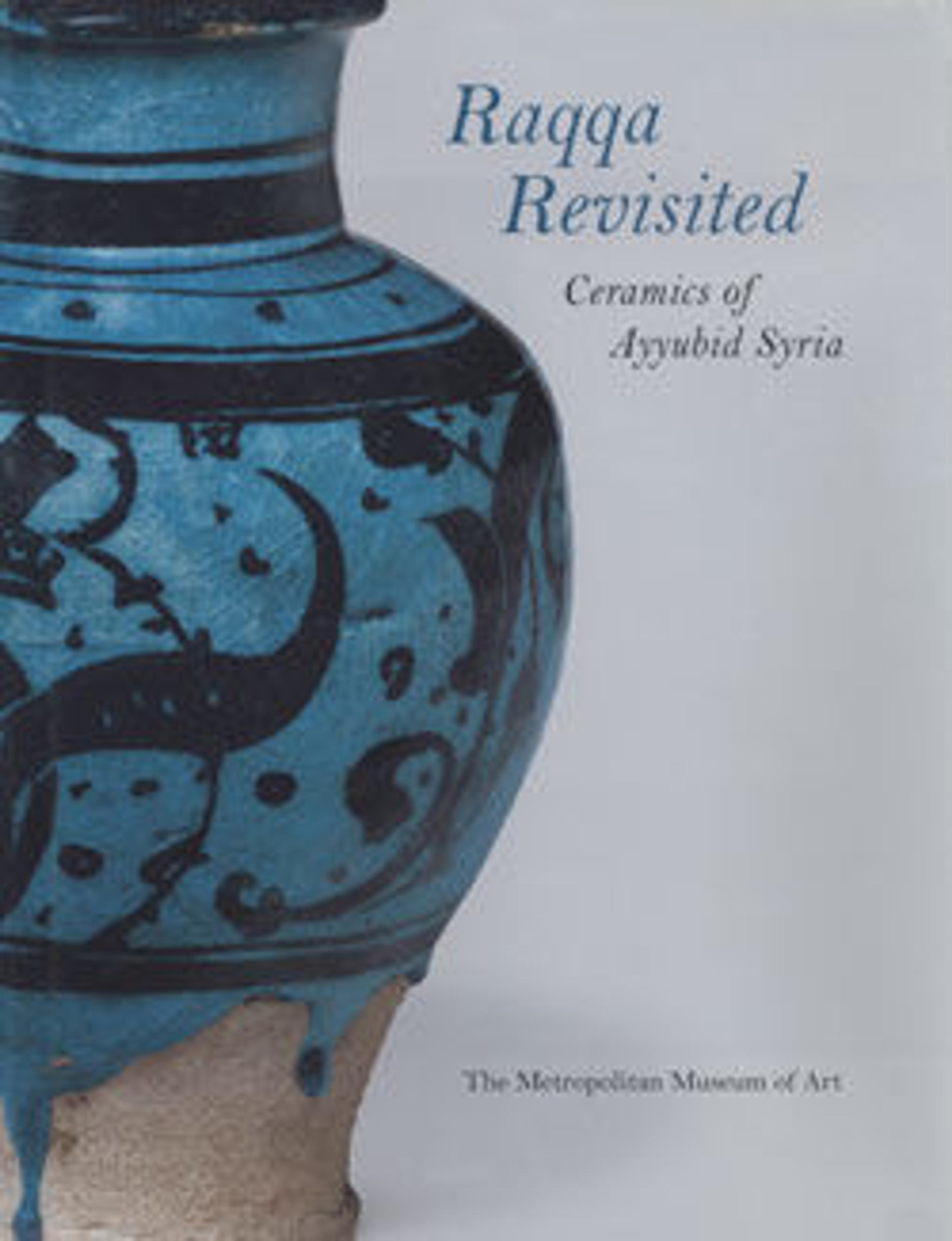Jar
Similar underglaze painted objects are usually attributed to Raqqa, a town on the Euphrates in northeast Syria, from which a large number appeared on the market from the end of the 19th century. While some of the workshops were located there, as the unearthing of a large number of wasters confirms, others were located elsewhere along the Euphrates valley, in southern Anatolia, central Syria, Damascus and as far as Egypt.
This jar is said to come from the so-called "Great Find" in Raqqa in the early 20th century, when a colony of Circassians that was being relocated by the Ottomans was given permission to excavate an archaeological area in search of building material. They found a number of large jars containing intact vessels which were eventually sold on the market (see also 56.185.22 and 56.185.18).
This jar is said to come from the so-called "Great Find" in Raqqa in the early 20th century, when a colony of Circassians that was being relocated by the Ottomans was given permission to excavate an archaeological area in search of building material. They found a number of large jars containing intact vessels which were eventually sold on the market (see also 56.185.22 and 56.185.18).
Artwork Details
- Title: Jar
- Date: late 12th–early 13th century
- Geography: Said to be from Syria, Raqqa
- Medium: Stonepaste; underglaze painted under transparent turquoise glaze.
- Dimensions: H. 11 1/2 in. (29.2 cm)
Diam. 8 1/4 in. (21 cm) - Classification: Ceramics
- Credit Line: H. O. Havemeyer Collection, Bequest of Horace Havemeyer, 1956
- Object Number: 56.185.15
- Curatorial Department: Islamic Art
More Artwork
Research Resources
The Met provides unparalleled resources for research and welcomes an international community of students and scholars. The Met's Open Access API is where creators and researchers can connect to the The Met collection. Open Access data and public domain images are available for unrestricted commercial and noncommercial use without permission or fee.
To request images under copyright and other restrictions, please use this Image Request form.
Feedback
We continue to research and examine historical and cultural context for objects in The Met collection. If you have comments or questions about this object record, please complete and submit this form. The Museum looks forward to receiving your comments.
